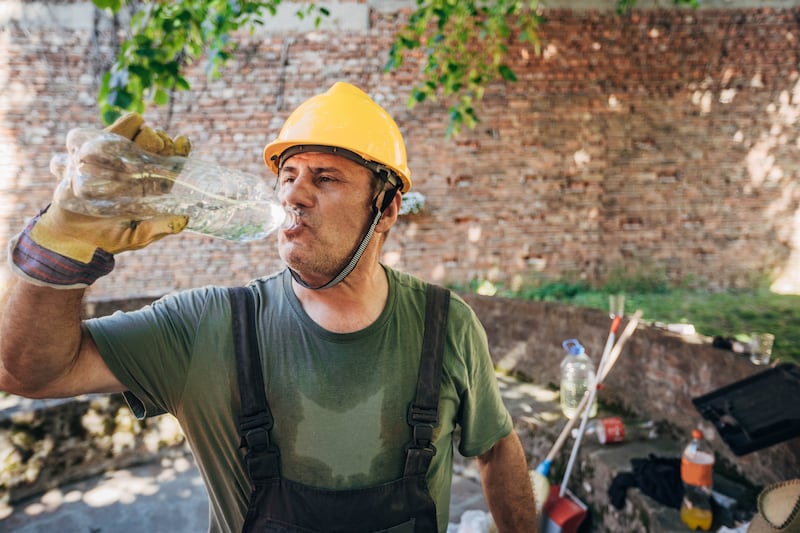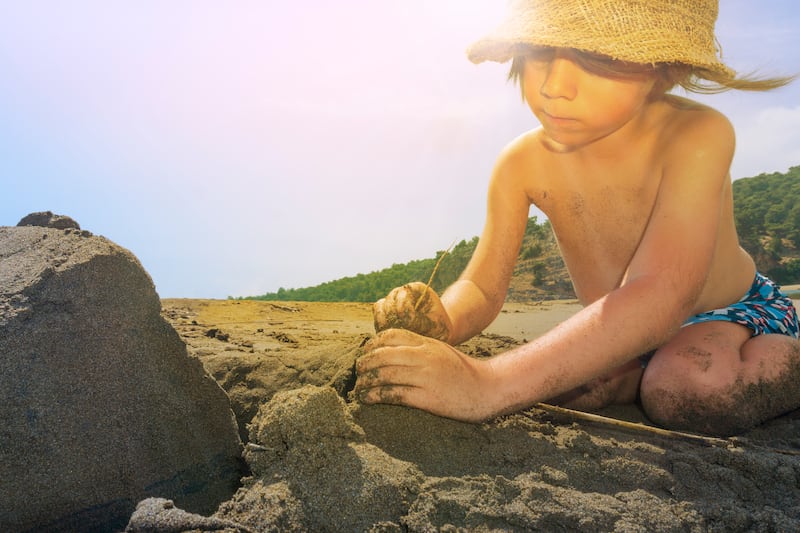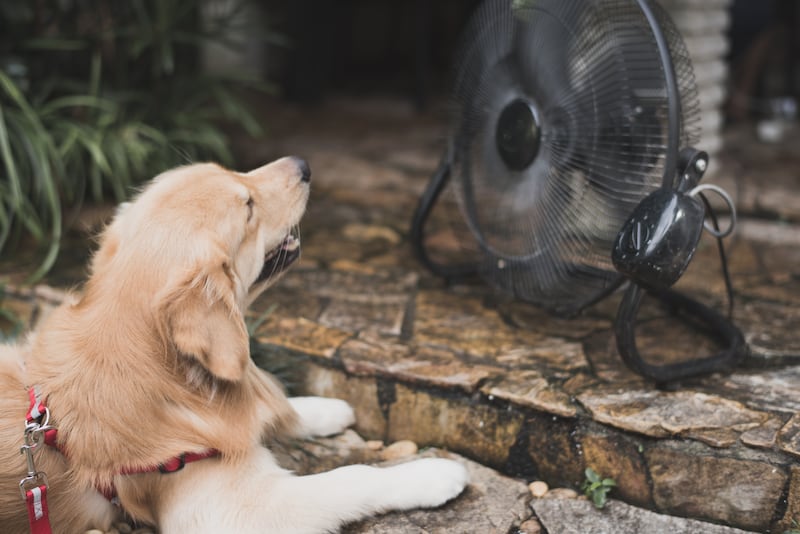With our summers warmer than ever across Europe — including the current heatwave — we, our parents, our grandparents, our children and even our pets are all at risk of heat exhaustion and, worse, heatstroke. What are the warning signs? What can you do to prevent it and treat it, and when do you need urgent medical help?
Adults
In heatstroke, the brain loses the ability to regulate body temperature, potentially leading to a cascade of damage to the liver, kidneys, muscles and particularly the heart. It can develop rapidly, with little warning, and can be fatal. But before you reach the danger zone of heatstroke, most adults will experience symptoms of heat exhaustion. “Heatstroke is an emergency; heat exhaustion is not normally so,” says Dr Lynn Thomas, medical director of St John Ambulance in the UK.
It is a good idea to look at reliable symptom guides for heat exhaustion and heatstroke online, but, in essence, heat exhaustion is that unwell feeling most of us have experienced at some point in very hot weather. “You may notice dizziness or being slightly confused, headaches, cramps; you’d be sweating, cool skin, feeling sick, have a faster breathing rate and quicker heart rate,” says Dafydd Beech, of the British Red Cross’s national community education team.
In contrast, a person suffering from heatstroke may still have dizziness, headache and discomfort, but crucially, their skin will become hot, flushed and dry. “The body is losing its ability to sweat,” says Thomas. “It can’t lose any of that heat and it just keeps getting hotter and hotter. That can cause people to become quite confused. They can become unconscious, or have seizures and fits.”
READ MORE

This is the danger zone: “If somebody is not improving with water and being cooled down; if they’re not sweating, even though it’s really hot; if they’re not managing to keep water down or drink water; if they have a temperature above 40 Celsius — 104 Fahrenheit — or they become unresponsive, please ring 999 — or 112 — no matter how busy it is,” says Thomas. She suggests using speakerphone. “Unfortunately, heatstroke could lead to somebody having a cardiac arrest. Hopefully you won’t get to that point, but if you do, the call handler will talk you through everything you need to do.”
It is trickier, of course, to recognise the symptoms in yourself, especially when one of them is confusion. “There is absolutely an increased risk of people developing heat exhaustion and heatstroke if they live alone,” says Thomas. “You may not notice you’re feeling a bit confused, because how would you know?” Beech advises to look out for any sense that “things start to feel worse, like: ‘Something’s not right here.’”
In addition to the basic advice to stay in the coolest part of your home, and avoid exertion, Thomas’s advice is to stay hydrated, “and keep an eye on how often you go to the bathroom: urine should be light-straw-coloured”. It is also important to be aware of the possible effects of any medication you are taking: “Some antidepressants can reduce the ability to manage high temperatures or reduce your ability to sweat,” Thomas says. “Ensure that you’ve got a method of calling on help if you need to do so,” adds Beech. “Have your phone near you.”
First aid for people afflicted by heat exhaustion and heatstroke is mainly common sense: move the person to a cool place, give them water to drink (this may not be possible for heatstroke sufferers) and try to cool the skin. Thomas suggests “a sponge or spray or ice packs; pour some water on the skin because that helps evaporation.” For more serious cases, Beech suggests “wrapping the person in cold, damper clothes”. It is important not to try to cool a heat exhaustion sufferer very rapidly, which can lead to shock. “We sometimes hear about throwing the person into cold baths: you shouldn’t do that,” says Beech. The aim is “slowly and steadily cooling the person down”.
Older people
The symptoms of heat exhaustion and heatstroke are the same for older adults, but they can be more vulnerable to dehydration, and may lose the urge to drink, which can increase the risks of heat-related illness. “The worry in elderly people is that they don’t always recognise some of the signs,” says Thomas.
“Please check on your elderly relatives and neighbours way more frequently than you would normally; try to get them to stay inside and keep the curtains closed.” It can be difficult, she says, to persuade dementia sufferers in particular to drink. “Maybe put some water next to them with some ice in it; check they are drinking it. Tea is fine, thank goodness.”

Children and babies
“It’s difficult with children, because they love being outside and they won’t necessarily say, ‘I need to go inside because I’m hot.’ So make sure they are going to the loo regularly and having lots to drink,” says Thomas. Symptoms of heat exhaustion and heatstroke are much the same in children as they are in adults, but note that when babies are suffering from heat exhaustion, often they “get sleepier and don’t interact as much”.
To keep babies cool, “stay indoors or go out early”, says Claire Maguire, a postnatal practitioner with the UK’s National Childbirth Trust. When you do go out, avoid clipping a muslin to the buggy or pram for shade: “Research says this can cause the inside of the pram to heat up and cause the overheating you were trying to prevent in the first place.” Maguire recommends getting familiar with your baby’s normal temperature. (Test on the back of the neck or the chest, not the extremities, which are cooler.) “That way you know when they’re too hot.”
Infant safe-sleep guidelines recommend bedrooms should be at 16-20 degrees, which is tough in this weather. Maguire’s top tip is to three-quarters fill a two-litre bottle of water, freeze it, cut the plastic away, then stand it upright in a large roasting tin in front of a fan for half an hour or so before using a room. “Never point a fan directly at a baby,” says Maguire; they struggle to adapt to changes in temperature.
Maintaining hydration is vital, too. “Babies are very vulnerable to dehydration because of their volume-to-surface-area ratio: if they get dehydrated it can affect their health much more quickly than someone larger,” says Maguire.
Breastfed babies may want to feed more often, she says; formula-fed babies can have small quantities of water regularly in a “free-flow sippy cup” (boiled and cooled if they are under six months). Keep a tally of wet nappies: “If you have an older baby, you’re probably used to the frequency of their wet nappies,” says Maguire. “If you have a much younger baby and you’re not quite sure what the rhythm is, it’s around six nappies a day.” If you’re in any doubt at all, call your doctor — the HSE website has useful information that you can also consult.

Pets
Our furry housemates are also vulnerable to heat-related illness, says Dr Karen Humm, an emergency and critical-care clinician at the Royal Veterinary College in London. Those that are overweight, those with thick fur designed for cold temperatures or flat-faced (brachycephalic) dogs such as pugs and bulldogs are even more at risk. “Dogs don’t sweat, really,” Humm says. “So if they can’t pant effectively, they can’t lose heat effectively.”
The warning signs that your dog may be dangerously overheating, Humm says, are “non-specific, and that’s why it’s hard”. Panting excessively or more noisily than usual is a key warning sign. Chris Wilson, a small-animal vet based in London, says dogs can also seem “restless, or listless and out of sorts”. More severely heat-affected dogs can drool, or suffer vomiting or diarrhoea, and at worst, collapse and suffer seizures.
It is important, both agree, to act fast, well before this happens. Once an animal suffers heat-induced enzyme damage, this can be irreversible, even leading to multiorgan failure and death. “If you’re not sure and they don’t seem quite right, ring the vet. If they’re breathing noisily, definitely ring the vet. If they are uncoordinated, stumbling, if they appear a little drunk or difficult to rouse or have collapsed, go straight to the vet — ring them when you’re on the way,” says Humm. “The emphasis is on stopping them from reaching that stage,” agrees Wilson.
Prevention is best. “Keep them shaded, keep them calm, offer them water,” recommends Humm. You can cool dogs with water applied to the skin, although Wilson warns that if you use a wet towel, it’s important to replace it regularly: “They can dry out really fast and end up insulating the dog further.”
Dog behaviourist Louise Glazebrook says some dogs enjoy a paddling pool, or cubes of frozen bone broth to play with or chew on. “Put fans on, leave cold water with ice packs underneath, give access to cool, tiled surfaces and give cooling snacks, such as hard-boiled eggs or carrots from the fridge.” Clip hairy dogs short, she advises: “It doesn’t matter how they look: they need their belly and chest plate area to be clipped very short to allow their body to make contact with cool surfaces.”
People now mainly know not to leave dogs in hot cars, Humm says, although it does still happen.
The next key message to get across is that on very hot days, it is vital only to walk dogs extremely early in the morning or late at night, or even not at all. “There’s a misconception that an animal won’t go for a walk if it’s bad for them, and it’s just not true,” says Humm. In a recent study, she says, three-quarters of heat-related illness cases were brought on by exercise. “If in doubt, leave your dog at home to rest and be in peace,” says Glazebrook, who notes that dogs’ tolerance of touch, petting and being handled is likely to decline in the heat, potentially leading to irritability. “Right now, I don’t want to be touched. It’s even worse for them — they have fur coats on!”
By contrast, cats rarely suffer heat-related illness unless they are trapped or without access to water. “They’re evolutionarily from much hotter places,” says Humm. “Cats are much more sensible than dogs,” adds Wilson. “They are quite good at regulating their temperature behaviourally.” They are, however, “notoriously bad drinkers. So leaving taps running, leaving glasses of water around, or some cats like to lick condensation off frozen bottles of water — all these are things you can do to make sure they’re getting enough fluids.”
Spare a thought, too, for rabbits in hutches in hot sunny places, Wilson says: “People forget about them at this time of year. Keep them in the shade, in cooler areas, make sure they have access to water and move them inside if you can get it cooler indoors.” — Guardian












